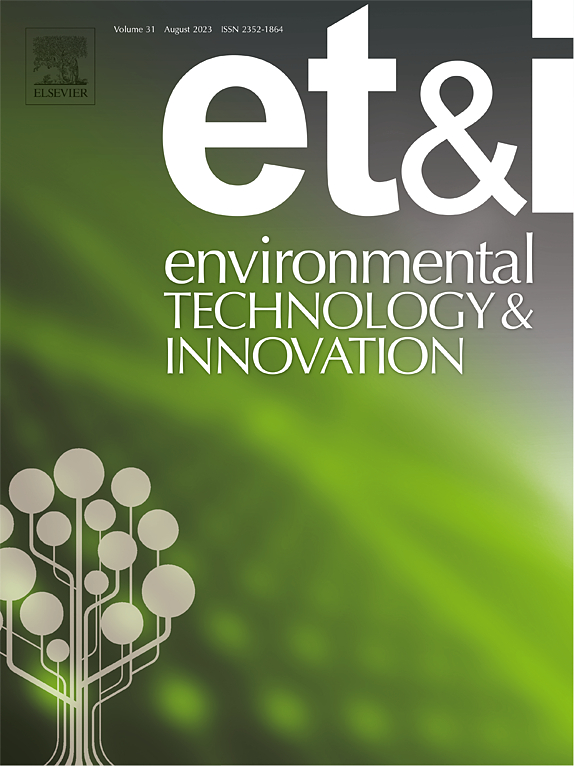Organic acids promote the generation of reactive oxygen species by Fe(III)-modified montmorillonite: Unraveling the Cr(VI) reduction mechanism
IF 6.7
2区 环境科学与生态学
Q1 BIOTECHNOLOGY & APPLIED MICROBIOLOGY
引用次数: 0
Abstract
Widespread iron-bearing clay minerals exhibit excellent performance in remediating Cr(VI) contamination in aqueous and soil environments. However, the environmental factors and mechanisms underpinning Cr(VI) reduction via Fe(III)-exchanged clay surfaces remain insufficiently explored. In this study, we delve into the synergistic effects of Fe(III)-exchanged montmorillonite (MMT) and organic acids on Cr(VI) reduction. The results showed that Cr(VI) removal efficiency was significantly influenced by the type and concentration of organic acid, as well as the initial pH of the solution. Notably, the presence of ascorbic acid (H2A) significantly promoted Cr(VI) reduction by Fe(III)-exchanged MMT at pH 3.0, achieving rates 4–7 times higher than those observed with other organic acids. Spectral analyses identified Cr(OH)3, Fe(III)-Cr(III) complexes and Cr2O3 as the primary reduction products of Cr(VI). Further investigations through chemical probe experiments and radical quenching tests demonstrated that exchangeable Fe(III) on the surface of MMT was reduced to Fe(II) by H2A. The resulting Fe(II) participates in Fenton reaction, generating superoxide radical (O2•–) and hydroxyl radical (•OH), which act as potent electron donors to facilitate Cr(VI) reduction. Additionally, both H2A and Fe(II) directly contribute to the partial reduction of Cr(VI). These findings expand the potential applications of Fe(III)-exchanged MMT in treating Cr(VI)-contaminated wastewater, providing a promising strategy for environmental remediation and pollution control.
求助全文
约1分钟内获得全文
求助全文
来源期刊

Environmental Technology & Innovation
Environmental Science-General Environmental Science
CiteScore
14.00
自引率
4.20%
发文量
435
审稿时长
74 days
期刊介绍:
Environmental Technology & Innovation adopts a challenge-oriented approach to solutions by integrating natural sciences to promote a sustainable future. The journal aims to foster the creation and development of innovative products, technologies, and ideas that enhance the environment, with impacts across soil, air, water, and food in rural and urban areas.
As a platform for disseminating scientific evidence for environmental protection and sustainable development, the journal emphasizes fundamental science, methodologies, tools, techniques, and policy considerations. It emphasizes the importance of science and technology in environmental benefits, including smarter, cleaner technologies for environmental protection, more efficient resource processing methods, and the evidence supporting their effectiveness.
 求助内容:
求助内容: 应助结果提醒方式:
应助结果提醒方式:


